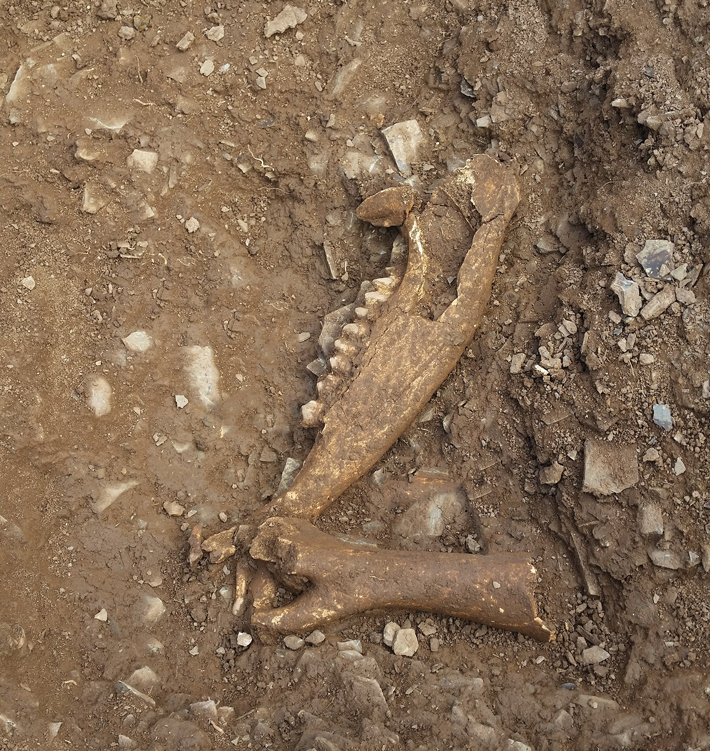Where's the Beef?
January/February 2020
 Large amounts of animal bone found in a ditch on the outskirts of a Romano-British settlement near Ipplepen, in southwest England, might point to the operations of a third-century A.D. butchery. Most of the bone came from the feet and heads of cattle likely butchered on-site, which suggests the prime cuts of meat were sold and consumed elsewhere. Burned limestone thrown in with the bone could be evidence of the production of lime, which was often used to process hides to make leather. This, along with butchery marks on some bones that resulted from removing the hides, may indicate that tanners also worked at the site.
Large amounts of animal bone found in a ditch on the outskirts of a Romano-British settlement near Ipplepen, in southwest England, might point to the operations of a third-century A.D. butchery. Most of the bone came from the feet and heads of cattle likely butchered on-site, which suggests the prime cuts of meat were sold and consumed elsewhere. Burned limestone thrown in with the bone could be evidence of the production of lime, which was often used to process hides to make leather. This, along with butchery marks on some bones that resulted from removing the hides, may indicate that tanners also worked at the site.
Despite Ipplepen’s location on the western edge of the Roman Empire, explains University of Exeter archaeologist Stephen Rippon, imported tableware and amphoras, which contained olive oil and wine, unearthed at the site reveal that residents adopted at least some Roman dining and culinary practices. However, they continued living in roundhouses similar to those from the settlement’s earliest occupation in the Iron Age, centuries before. Says Rippon, “It was as if they were picking and choosing which aspects of being Roman they liked.”